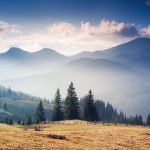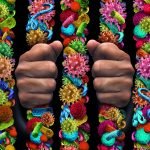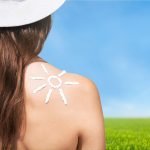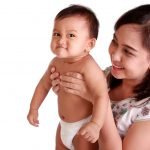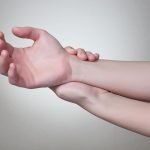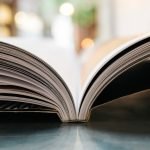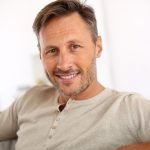WNF: A History of Naturopathy in South Africa
 Naturopathic News
Naturopathic News
Wendy Ericksen-Pereira, ND
Nicolette V. Roman, PHD
Rina Swart, PHD
A huge growth in complementary and alternative medicine (CAM) took place in South Africa in the 1960s that paralleled what was happening in other parts of the western world. Naturopathy has been practiced in South Africa for over 60 years, and the history of naturopathy is entwined with the broader history of CAM. No laws existed at that stage to regulate the curriculum, education, and training of CAM practitioners. With the passage of time, various statutes were introduced, which eventually led to changes in legislation and the establishment of a recognized training program. Naturopathy became a legally regulated profession, the full history of which has never been documented.
This article explores the history of naturopathy in South Africa. A 2-phase qualitative research design was used, consisting of a document search and semi-structured interviews with key informants who were identified through a process of snowballing. Information collected from the naturopaths that participated in the interviews was triangulated with documentation uncovered in the archives of the Allied Health Professions Council of South Africa (AHPCSA) and other available literature. The result is a history of events that took place and which reveals the effect of various legislation on the profession. Changes in the political system paved the way for changes in legislation that allowed for the registration and training of naturopathic practitioners. However, the lack of a functioning association and the small number of naturopathic graduates has hampered the growth of the profession, preventing it from becoming a significant contributor to the healthcare system.
Introduction
An emerging trend is to use the term “traditional and complementary medicine” (T&CM), as it encompasses the practices, practitioners, and products of both traditional and complementary medicine.1 For the purposes of this investigation, the term CAM has been used since research by Ng et al (2016)2 showed that CAM was the most commonly used term to describe complementary medicine. CAM has been identified as “a group of diverse medical and healthcare systems, practices, and products that are not presently considered to be part of conventional medicine.”3
The last few decades have seen exponential growth in the use of CAM products and therapies, with Fischer et al (2014)4 suggesting that CAM will play an important role in addressing the rise in chronic diseases due to aging in Europe. Proposed reasons for this shift towards CAM have included growing disillusionment with the biomedical model of medicine,5 overprescription of drugs and the impersonal approach to patients within western medicine, and the inability of the mainstream biomedical model to successfully treat chronic diseases.6 South Africa has also experienced a growth in the use of CAM. In 1999, it was estimated that turnover from the use of CAM products was R1.29 billion.7 In 2014, this figure was estimated to be R8 billion.8
The history of CAM in South Africa goes back centuries. The early Dutch settlers brought their traditional medicines with them. By the 19th century there was a small number of CAM practitioners9; however, after World War II, South Africa experienced an increase in immigrants, which included CAM practitioners. Old Dutch medicines and homeopathic remedies were already in use in the country, but the new wave of immigrants – especially those from Germany – used homeopathy, naturopathy, and herbal medicines to treat various illnesses.10
Medical practitioners began to campaign against the growing number of CAM practitioners. This resulted in the Medical Association of South Africa declaring CAM to be “illegal and unscientific” in 1953,10 and any cooperation between allopathic and CAM practitioners was prohibited in their medical code.11 This meant that CAM practitioners could neither share premises with biomedical practitioners nor refer patients to them. CAM practitioners were therefore excluded from the public healthcare system. As a result, all CAM modalities were forced into a private healthcare setting.10 The Health Professions Act 56 (South Africa) 1974 No. 31825 was amended in 2009 with the insertion of rule 8A, which states that practitioners are only allowed to share rooms with others who are registered under the Act. Thus, through regulation, all CAM practitioners were legally prevented from working in or making a contribution to the public healthcare system.
As a system of CAM, the history of naturopathy is reflected in the history of CAM in South Africa. Dr William Henry Lilley emigrated to South Africa from the United Kingdom and in 1951 started training the first group of homeopaths.9 He was instrumental in establishing Lindlhar College, which trained homeopaths, naturopaths, and osteopaths.9,12 Lilley was one of the founders involved in the formation of the South African Naturopathic and Homeopathic Association9,12; this was the start of the training of naturopaths in South Africa.
Naturopathy in South Africa is defined as a “system of healing based on promoting health and treating disease using the body’s inherent biological healing mechanisms to self-heal through the application of non-toxic methods” (Regulation 127 of 2001). Naturopathic medicine is viewed as a system of primary healthcare based on the philosophy and principles of naturopathy.13,14 These principles include: the healing power of nature; the naturopathic doctor as teacher; finding the root cause of an illness; treating the patient holistically; health promotion and prevention of disease; and encouraging overall wellness.15
As a system of medicine, naturopathy is well suited to address the disease challenges of the 21st century, as it focuses on preventative medicine through the use of education. By empowering patients to understand the cause of their illness, it encourages a change in lifestyle. Treatment is non-invasive and can be low-cost. Naturopaths are well placed to participate in and contribute to the public healthcare system on a primary healthcare level. However, at present, the small number of registered naturopathic practitioners, together with the legislature, presents a challenge for integration. To understand the current situation and comprehend how a once burgeoning CAM profession was prevented from training new practitioners for close to 30 years owing to legislative enactments, it is necessary to trace the history of naturopathy in South Africa. The history of naturopathy in South Africa is a story that has never been fully explored.
Methodology
In order to research the history and development of naturopathy in South Africa, a qualitative design was employed, with the research being divided into 2 phases. The first phase consisted of a document search, while the second phase consisted of interviews with practitioners who were either students during the early years of naturopathy in South Africa or were practicing at the time.
Phase 1: Document Search
Permission was obtained from the Registrar of the Allied Health Professions Council of South Africa (AHPCSA) to search their archives, per a request for Access to Record of Public Body (section 18[1] of the Promotion of Access to Information Act2 [South Africa] 2000 No. 20852).
Available records were accessed May 3-5, 2015. The researcher had access to all documents available at the AHPCSA office up to the period that the current registrar took over in 2009, consisting of over 30 files and record books. Records included registration documents as well as minutes of meetings. It should be noted that there might be gaps in information owing to old documents that had not been accessed for many years by the AHPCSA due to having been disposed of during a recent move to new premises. Registration records of people deceased or deregistered for longer than 10 years were among the documents not retained, although the original registration applications along with identity document copies were retained. Documentation of all active registrations, regardless of the duration of registration, were also retained.
Documents was separated into 2 main themes. The first theme was registration, as it involved the files of the first practitioners registered as a result of the implementation of the Homeopaths, Naturopaths, Osteopaths and Herbalists Act 52 (South Africa) 1974 No. 4441. The second theme was that of minutes of meetings of the different boards within the AHPCSA, starting with the establishment of the first council to regulate natural medicine in South Africa in 1983.
Phase 2: Interviews
Inclusion criteria for the interviews were determined as all naturopaths that are either currently registered with the AHPCSA or had been registered as a naturopath between the period of 1974 to 2005. Any other registered CAM practitioner that had been registered at any point between 1974 and 1983 was also considered, due to the overlaps in training that took place in the 1960s and 1970s. All naturopaths that graduated from the tertiary training institution after the passage of Regulation 127 of 2001 were excluded.
The researcher went through the list of registered naturopaths on the AHPCSA website and listed all naturopaths with the earliest registration numbers, starting with double-zero (00). This process was repeated for registered chiropractors, homoeopaths, osteopaths, and phytotherapists, to establish whether multiple registrations were held. A list was then compiled of the naturopaths that had registered under Act 52 of 1974. By searching the internet – including the Medline directory and the Therapists Online site, as well as the telephone directory – the contact details of these early naturopaths were obtained. Contact was made via phone and/or email. The purpose of the communication was explained and the naturopaths were asked if they were willing to participate in the research project.
Five people were identified, of whom 4 were contacted by phone. One refused to be interviewed, 1 agreed to be interviewed, while the receptionists at the practices of the other 2 advised that the request be sent via email. The fifth person was not contactable via telephone and was emailed. However, none of the emails was responded to. As a result of this low response, a snowball sampling technique was used to identify further participants for the research; this resulted in a total of 8 people being interviewed. One person was no longer registered, and another was not a naturopath but, because of that person’s involvement in the 1960s and 1970s, s/he was interviewed in order to develop a history of CAM in South Africa. Semi-structured interviews were conducted, as this allowed the interviewer the opportunity to explore responses in greater detail – this being a necessary consideration, given the age of some of the key informants. Interviews were conducted at the convenience of the participants. Three interviews were conducted face-to-face, 3 were conducted via Skype, 1 telephonically, and one participant requested the interview questions and provided a written response to the questions via email. All interviews, except for 1, were recorded.
They were then transcribed verbatim and, along with the response received electronically, were thematically coded based on the interview questions, and analysed manually.16
Participants were all emailed the information sheet, ethics clearance document, and interview questions prior to the interview. The identities of the participants were protected through the use of a coding system known only to the researcher. All information gathered in the process of research was securely kept in a password-protected computer and a back-up external hard drive, which, along with other documents collected, is kept under lock and key and is accessible only to the researcher.
Through triangulation of the interviews with the document search and available literature, a history of naturopathy in South Africa was constructed.
Results
The following themes and subthemes emerged:
- Phase 1: Document Search – registrations and minutes of meetings
- Phase 2: Interviews – early history, effect of legislation, activism
Document Search
Registrations
Act 52 of 1974 was promulgated in Parliament on October 16, 1974. Section 3(a) of this Act required practitioners to register with the Department of Health within a 6-month period from the date of publication of the gazette. It allowed for the registration of CAM practitioners that were already in practice, provided that they could show proof of their training in the form of a certificate issued by a training institution. Students who were still studying and provided proof of the institution at which they were studying were registered as students. Foreign practitioners were additionally required to submit proof of permanent residency or proof that they were “capable of acquiring South African citizenship” (Act 52 of 1974 3[b i]). Failure to register either as a practitioner or student meant that the practitioner would not be allowed to continue practicing or that the student would not be allowed to register once s/he had completed their studies.
A summary of practitioners that registered with the Department of Health as a result of the promulgation of Act 52 of 1974 is listed in Table 1.
Table 1. 1974 Practitioner Registrations
| Age Group: Year Born | Naturopathy | Homeopathy | Osteopathy | Herbalism + Homeopathy | Naturopathy + Osteopathy | Naturopathy + Homeopathy | Naturopathy + Herbalism | Homeopathy + Osteopathy | Naturopathy, Homeopathy + Osteopathy | South African | Foreign
|
| Up to 1910 | 5 | 1 | 1 | 6 | 1 | 1 | 11 | 4 (American, British + German) | |||
| 1911-1920 | 3 | 18 | 8 | 4 | 10 | 38 | 6 (British, Cyprian, German, Indian , Irish, Italian) | ||||
| 1921-1930 | 1 | 20 | 1 | 17 | 1 | 11 | 40 | 11 (British, Dutch, German, French, Portuguese, Rhodesian) | |||
| 1931- 1940 | 1 | 16 | 1 | 1 | 12 | 3 | 14 | 40 | 8 (American, Dutch, German, Greek, Indian, Swiss, Portuguese) | ||
| 1941-1950 | 5 | 3 | 5 | 12 | 0 | ||||||
| Totals | 5 | 64 | 2 | 1 | 2 | 46 | 2 | 8 | 41 | 142 | 29 |
| Percent-age | 2.9 | 37.4 | 1.2 | 0.6 | 1.2 | 26.9 | 1.2 | 4.7 | 23.9 | 83 | 17 |
Table 1 is not conclusive, as it could not be ascertained if all the applications had been forwarded to the Council by the Department of Health in 1983 or if any of the files had been disposed of by the AHPCSA. Gower puts the number of registered homeopaths at 350.9 It should be borne in mind that these files only recorded practitioners and not students. The registration process divided applicants into 2 groups: practitioners and students. Students were allowed to continue with their studies and were registered after 1974 if they had registered as students in 1974.
The data available indicate that the majority of the practitioners who were registered in 1974 were South African, confirming the presence of training institutions in South Africa for each of these professions at the time. It must be noted that multiple registrations predominated, with practitioners registered for both homeopathy and naturopathy being the most common combination (26.9%), followed by homeopathy, naturopathy, and osteopathy (23.9%). The various combinations with naturopathy account for 53.2% of registrations, while registration for naturopathy alone accounts for only 2.9%. The number of homeopaths who registered only for homoeopathy were 37.4%. From these figures, it can be seen that the number of homeopaths registered were in the majority.
Minutes of Meetings
The Chiropractors, Homeopaths and Allied Health Service Professions Council became the Allied Health Professions Council of South Africa in 2000.7,9 The Chiropractors, Homeopaths and Allied Health Service Professions Amendment Bill was first published in Government Gazette No. 21825 of 2000 and was later promulgated as the Allied Health Professions Act 63 (South Africa) R127 2001 No. 22052. This provided for the establishment of professional boards that enabled naturopaths and other diagnostic and therapeutic professions to be registered with their respective professional boards. Since no specific system had been used to sort through the files before discarding them, the available files were not in chronological order. Minutes of the meeting of the Public Board of Homeopathy, Naturopathy and Phytotherapy (PBHNP) ranged from 2002 to 2005. One of the major issues that appeared the most frequently on the agendas of the PBHNP meetings was the registration of naturopaths and phytotherapists. At one PBHNP meeting in 2002, the list of registered naturopaths was charted (Appendix A). The registration list contained the names, colleges trained at, year of completion of studies, and year of first registration as naturopaths. At least 18 naturopathic training colleges existed in the 1960s and 1970s, with 100 registered naturopaths at the time.
From the minutes of PBHNP meetings held in May 2003, the outcome of applications from naturopaths for registration was also charted. Of the 76 applications, 3 were approved to sit for the Council Regulated Examinations (CRE) and 73 were conditionally approved to sit for the examination – on condition of submission of proof of a certificate that the naturopathic studies were completed. Not all documents indicated the place of study of the applicants. However, the known institutions of training are summarized in Table 2.
Table 2. Training Institutions
| Name of training institution | Medical doctors | Heilpraktiker (Germany) | Belcher College (USA) | Clayton College of Natural Health (USA) | SA College of Herbal Medicine | SA College of Natural Medicine | SA College of Naturo-pathic Medicine | Webber Natural Medicine Institute | World Corres-pondence College |
| Number of graduates | 2 | 2 | 2 | 2 | 3 | 8 | 11 | 4 | 5 |
Of this list of applicants that were conditionally approved to write the CRE, no further minutes were found relating to the number that finally wrote the examination or to the outcome of these examinations. However, in minutes tabled in 2003, concerns were raised about the legitimacy of some of the documents that had been submitted.
Interviews
Early History
A detailed history of the early years of naturopathy was developed as a result of the input from all participants. One participant chose to email the response because the person did not wish to be recorded and was only prepared to divulge certain information. However, the information which was provided corroborated the information provided by other participants.
The period from the 1950s to 1974 showed rapid growth and training of CAM practitioners in the areas of chiropractic, homeopathy, naturopathy, and osteopathy. Private training colleges flourished, as there was no control over the registration of these colleges or the curriculum taught. One of the more highly regarded training facilities at the time was Lindlahr College in Johannesburg. The college offered training in homeopathy, naturopathy, and osteopathy.9 Naturopaths trained at Lindlahr College, and records indicate that by 1957 naturopaths were graduating from the college.12 By the 1960s, many training schools of varying quality were flourishing all over the country. One of the interviewees referred to these as the “fly by night” schools.
Interviewees reported that many practitioners were trained through “apprenticeships” with other practitioners. Evidence also suggests that there were a number of practitioners from England who either came over for periods of time to teach or who settled in the country. In the Cape Town area, Dr Oliver Lawrence, who was a British naturopath, set up a practice at his home where he taught his students after hours and on weekends. He taught the same curriculum as at Lindlahr College, which included subjects such as anatomy, physiology, hygiene theory, and homeopathy, among others. Dr Stanley Dean was an herbalist who had a practice on the Foreshore in Cape Town in the late 1960s; he taught the herbal component of the course. All the interviewees agreed that there was an abundance of training facilities available at the time. There was a considerable degree of overlap in the training of students in homeopathy, naturopathy, herbal medicine, and osteopathy; this explains why the early practitioners used a broad range of modalities in practice, and it is the reason for such a high number of dual or multiple registrations (Table 1). On qualification, many of these practitioners went on to establish training centers, where they trained, in turn, other practitioners.
Effect of Legislation
With the introduction of Act 52 of 1974, all CAM training facilities were to be phased out and shut down. Practitioners were given a period of 6 months to register with the Department of Health. Students who were still training also had to register as students and were allowed to register upon completion of their studies. As a result of this Act, hundreds of practitioners were not registered, either because they were not aware of the legislation or because their applications were not approved owing to lack of certification to prove training.
Absence of registration did not stop people from practicing, and interviewees confirmed that, with the appointment of the first chairperson of the Chiropractors and Homeopaths Association, a serious effort was made to clamp down on unregistered practitioners in practice. If any practitioner was reported to the chairperson, the chairperson reported to the police to follow up. If practitioners were caught in the act of practicing, they were arrested and charged with practicing unlawfully. This punitive measure did not stop many practitioners who used euphemisms for their practices rather than the term “naturopath,” although, in essence, they still continued to practice as naturopaths. This is evidenced by the number of applicants who applied for registration as a result of the passage of Act 40 of 1995. If there was a lack of certification, it meant they could not write the CRE and were still excluded from the registration process.
The Associated Health Service Professions Act 63 (South Africa) 1982 No. 8160 provided for the establishment of the Associated Health Services Professions Board. As a result of the passing of this Act, all practitioners that had registered in 1974 were required to register again. However, no new registrations were allowed; according to the legislation, there were to be no new registrations of naturopaths after 1982, while the register was opened to chiropractors and homeopaths with the establishment of the Associated Health Service Professions Amendment Act 105 (South Africa) 1985 No. 9867. This Act also gave the new board the power to control and regulate the education of allied registered practitioners. According to minutes from 1987, training for chiropractors and homeopaths was approved by the Minister of Education in 1987 and courses officially started in 1989.17 No other training institutions for other professions were allowed.
Activism
The situation caused dissatisfaction among the other professions and led to the formation of the Confederation of Complementary Health Associations of South Africa (COCHASA). The South African Naturopathic Association (SANA) was formed in the early 1990s and lobbied as one of the members of COCHASA to open the register. In 1994, after the first democratic South African elections, there was a re-examination of laws in the country, including healthcare laws. This created an opening for COCHASA to lobby the Minister of Health to launch an investigation into the Chiropractors, Homeopaths and Allied Services Professions Council; as a result, the Chiropractors, Homeopaths and Allied Health Service Professions Amendment Act 40 (South Africa) 1995 No. 16643 was enacted, which allowed practitioners that had previously not been able to register to now apply for registration. This led to the institution of what was termed the “grandfather” clause, which allowed practitioners to undergo a 2-year period of training to upgrade their training to a level determined to be acceptable to the Council. They then wrote a CRE; if they passed, they were registered.
The Chiropractors, Homeopaths and Allied Health Service Professions Second Amendment Act 50 (South Africa) 2000 No. 21825 led to the establishment of the Chiropractors, Homeopaths and Allied Health Service Professions Interim Council, which operated from 1995 to 2000. Despite these concessions, COCHASA continued to lobby for the opening of the register, which would effectively mean that the training of naturopaths and other allied diagnostic professions would become a possibility. Members of COCHASA presented their case in November 2000 to the Parliamentary Portfolio Committee on Health, which subsequently voted for the registers to be opened. This led to the promulgation of Regulation 127 of 2001, which provided for the opening of the register for the diagnostic professions of Ayurveda, Chinese medicine and acupuncture, naturopathy, osteopathy, phytotherapy, and Unani Tibb.
SANA members became actively involved with the AHPCSA to determine the scope of practice and – through a comparative analysis of established international training institutions – drew up the curriculum required for the training of naturopaths. They also sought to actively engage with tertiary institutions to establish training facilities for naturopaths and other diagnostic professions that were not offered in South Africa. A School of Natural Medicine, which offered training in naturopathy, phytotherapy, traditional Chinese medicine, and Unani Tibb, was opened at a tertiary institution in the Western Cape in 2002 and currently provides what is still the only training for these diagnostic professions in South Africa.
Discussion
The present article explores the development of naturopathy as a system of CAM in South Africa. The findings of the research study outlined in this article show that the history of naturopathy is closely aligned with the history of CAM in this country. One of the challenges experienced in conducting this research was finding participants who met the inclusion criteria. Naturopaths who either practiced or studied between the 1950s and 1974 are now few in number, as many are now deceased, or no longer in practice, or were unwilling to speak about this period, especially the period following the passage of Act 52 of 1974. Although participants remembered the events that took place, they might have forgotten the precise dates when they occurred. Through the process of triangulating, the validity of the information was established.18
The passage of Act 52 in 1974 has had a long-term effect on practitioners. One of the participants chose to respond to the interview questions via email so that the content of the response could be controlled by the participant. Others asked questions about confidentiality, and the researcher had to explain in detail the ethical and confidentiality procedures. There still exists a sense of distrust and fear of being identified by peers.
No documentation of the number of practitioners that registered as a result of this Act could be found. The original registration forms were kept by the Department of Health and, with the establishment of Act 63 of 1982, the documentation was sent to the Council. AHPCSA disposed of some of the archived documents. This decision was made on the basis of the legal precept that permits documentation older than 5 years to be destroyed. No record was kept of which documents were disposed of, so there is no exact record of the number of registered practitioners. Information provided by the interviewees suggests that the number ran into the thousands. One of the shortcomings in this research is lack of certainty of the exact numbers of practitioners registered in the years leading up to the establishment of the AHPCSA in 2000.
After 1982, the records show that 17 naturopaths were registered between 1984 and 1996. Nine of these had dual registration as homeopaths and naturopaths, 2 had dual registration as osteopaths and naturopaths, and 5 were only registered as naturopaths. Missing information on the CRE and registration and discrepancies in registration numbers and years of qualification appear to confirm allegations by some practitioners of selective and preferential deviations from the regulations. The document search supports some of these claims. Act 63 of 1982 made provision for the establishment of the South African Associated Health Service Professions Board,9 which had several objectives. The most important objective was to “assist in the promotion and protection of the health of the population of the Republic” (1[3a]) and to “control the registration of persons in respect of any profession and to set standards for the training of intending practitioners” (1[3c]). The evidence available appears to suggest that this council failed in fulfilling these objectives. Practitioners were registered with a minimum of training as doctors and were legally allowed to practice.
Act 40 of 1995 allowed for the “grandfather” clause, which made provision for practitioners that had not previously been registered to undergo a 2-year period of training to upgrade their training before writing a CRE. The qualifications of some of the applicants is of concern, since there was no clear indication that they studied any naturopathy courses. There were no minimum criteria set for entry into the CRE, and one sees training colleges springing up to provide this training. This undermined the objective of the council to set appropriate standards for the training of practitioners that would safeguard the health of the public.
According to some of the interviewees, it was after the establishment of the naturopathy training course in 2002 that SANA gradually became less functional. By the time naturopathic students graduated, they found themselves with no functional association able to support and guide their professional development; this has had an adverse effect on the growth of the profession. Drawing from the North American situation, one finds organizations such as the Canadian Association of Naturopathic Doctors actively promoting and advocating for the professionalization of, and regulatory changes for, naturopathy.19 This activism has resulted in an increase in the number of naturopathic students. In 2009, this advocacy resulted in registered naturopaths being granted the right to prescribe certain categories of pharmaceuticals,20 which essentially placed them on the same level as general practitioners. In 2016, naturopathic graduates become actively involved in relaunching SANA. This may herald the start of another chapter in the history of naturopathy in South Africa.
Conclusion
The history of naturopathy in South Africa has not been recorded prior to the present article. This research has revealed a period of rapid growth of CAM in the period from the 1950s to 1974, which was abruptly halted through the introduction of legislation. As a direct result of continued activism by naturopaths and other CAM practitioners, legislation was changed and has led to legal recognition. This was a time of huge optimism for the CAM sector, as it saw the legitimization of CAM professions through the establishment of the AHPCSA as the start of a period of growth for these professions. This in turn resulted in establishing training programs at tertiary institutions.
However, this has not resulted in an increase in numbers of registered naturopaths. If naturopaths are to make a significant contribution to the healthcare system, there has to be a substantial increase in the number of naturopathic graduates as well as a strong association to promote public awareness of naturopathy. Growth and professionalization of the profession should ultimately lead to a change in legislation.
Acknowledgements: The registrar of the AHPCSA who granted permission to access the archives. All participants in the research who offered up their time to be interviewed. And a special Thank You to those who were in possession of documentation and made it available to the researcher.
Funding: This work was supported by the National Research Foundation sabbatical grant number 98206.
References:
- World Health Organization. WHO traditional medicine strategy: 2014-2023. December 2013. WHO Web site. http://www.who.int/medicines/publications/traditional/trm_strategy14_23/en/. Accessed March 26, 2018.
- Ng JY, Boon HS, Thompson AK, Whitehead CR. Making sense of “alternative”, “complementary’, “unconventional”, and “integrative medicine”: exploring the terms and meanings through a textual analysis. BMC Complement Altern Med. 2016;16:134.
- National Center for Complementary and Integrative Health. The Use of Complementary and Alternative Medicine in the United States. Last modified September 24, 2017. NCCIH Web site. https://nccih.nih.gov/research/statistics/2007/camsurvey_fs1.htm. Accessed March 23, 2018.
- Fischer FH, Lewith G, Witt CM, et al. High prevalence but limited evidence in complementary and alternative medicine: guidelines for future research. BMC Complement Altern Med. 2014;14:46.
- Reilly D. Comments on complementary and alternative medicine in Europe. J Altern Complement Med. 2001;7 Suppl 1:S23-S31.
- Chitindingu E, George G, Gow J. A review of the integration of traditional complementary and alternative medicine into the curriculum of South African medical schools. BMC Med Educ. 2014;14:40.
- Caldis KS, McLeod HD, Smith PR. The Fall of the Bamboo Curtain: A Review of Complementary Medicine in South Africa. South African Actuarial Journal. 2001;1:63-93.
- Rees A. CAM Regulation Critique Being Heard by Government. April 6, 2015. The Traditional & Natural Health Alliance. TNHA Web site. https://www.tnha.co.za/cam-regulation-critique-being-heard-by-government/. Accessed March 26, 2018.
- Gower N. A brief look at the history of homeopathy in South Africa. Last modified September 13, 2017. Available at: https://hpathy.com/homeopathy-papers/homoeopathy-south-africa/. Accessed July 25, 2016.
- Pretorius E. Complementary and alternative medicine and traditional health care in South Africa. In: van Rensburg HCJ, ed. Health and Health Care in South Africa. Pretoria, South Africa: van Schaik Publishers; 2012:505-560.
- Hassim A, Heywood M, Berger J, eds. Health and Democracy: A Guide to Human Rights, Health Law and Policy in Post-apartheid. Cape Town, South Africa: SiberInk; 2007.
- Prinsloo JP. History of Homeopathic Training in South Africa. 2010. Available at: http://www.biocura.co.za/history_homeopathic_education_in_south_africa.html. Accessed March 21, 2018.
- Wardle J, Oberg EB. The intersecting paradigms of naturopathic medicine and public health: opportunities for naturopathic medicine. J Altern Complement Med. 2011;17(11):1079-1084.
- Fleming SA, Gutknecht NC. Naturopathy and the primary care practice. Prim Care. 2010;37(1):119-136.
- Hausser T, Lloyd I, Yanez J, et al. WNF white paper: Naturopathic Philosophies, Principles and Theories. WNF Web site. http://worldnaturopathicfederation.org/wp-content/uploads/2015/12/WNF_White_Paper_June-2017.pdf. Accessed February 2, 2018.
- Braun V, Clark V. Using thematic analysis in psychology. Qual Res Psychol. 2006;3(2):77-101.
- Chiropractic Education in South Africa. Dynamic Chiropractic. 1993;11(18). Available at: http://www.dynamicchiropractic.com/mpacms/dc/article.php?id=42496. Accessed March 24, 2018.
- Carter N, Bryant-Lukosius D, DiCenso A, et al. The use of triangulation in qualitative research. Oncol Nurs Forum. 2014;41(5):545-547.
- National Associations for Naturopathic Doctors. AANMC Web site. https://aanmc.org/national-associations/. Accessed December 19, 2016.
- Eggertson L. Naturopathic doctors gaining new powers. CMAJ. 2010;182(1):E29-E30.
Appendix A. Details of 2002 Registration
| Year of Registration | Number Registered | Year of Completion of Studies | Site of Training (Institution) |
| 1980 | 1 | 1972 | Naturopathic College of SA |
| 1982 | 22 | 1954, 57,58,61, 62, 63, 64,1967,1969,1970 (x2),1972,1973 (x2), 1974(x4), 1976, 1980 | Lindlahr College, Canyon College , College of Natural Sciences, Naturopathic College of SA, Lindstrrom, SA Faculty of Naturopathy and Osteopathy |
| 1983 | 6 | 1969, 1974, 1972,1974 (x2), 1975 | Canyon College, College of SA, Lindlahr College, Naturopathic Association, SA Foundation of Natural Therapies |
| 1984 | 5 | 1967, 1972,1974 | Lindlahr College, SA Faculty of Homeopathic Medicine |
| 1985 | 8 | 1965, 1972,1974 | College of SA, Naturopathic Association of SA, SA Faculty of Homeopathic Medicine |
| 1987 | 1 | 1967 | Lindlahr College |
| 1990 | 2 | 1973, 1975 | College of Natural Sciences, SA Institute of Homeopathy |
| 1993 | 1 | 1974 | Canyon College |
| 1996 | 23 | 1957, 1971, 1973 (x2), 1974 (x7), 1976, 1982, 1989, 1993(X7) | African Herbal College, Bantridge Forest School, Transkei, Lindlahr College, SA Foundation of Natural Therapies, SA Homeopathic Association, World Correspondence College |
| 1997 | 7 | 1973, 1974, 1995 | College of Natural Therapy, College of Natural Science, Lindlahr College, Naturopathic College of SA |
| 1999 | 2 | 1978, 1981 | Naturopathic College of South Africa, Bantridge Forest School |
| 2000 | 1 | 1972 | Naturopathic College of South Africa |
Note: The number of registered naturopaths totaled 100. However, not everyone on the registration list recorded the year of completion of training or the institute at which the training was undertaken.


